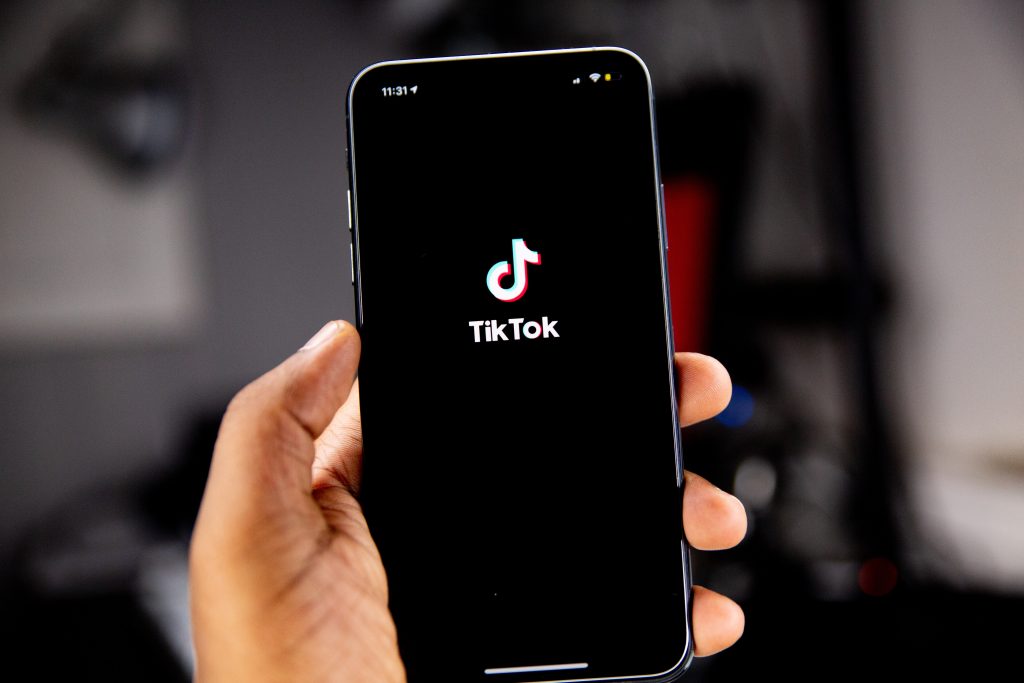Now, more than ever, people are turning to TikTok for learning and self-improvement. In fact, social media platforms have played a starring role in my own development…
Whether it’s learning how to crochet a blanket for my mum or what strength of sunlight my favourite houseplant likes best (note to self: orchids do not enjoy direct sunlight). Whilst other networks race to keep up, TikTok is leading the charge with its trend-driven learning content.
The app’s rising popularity as a learning platform accelerated considerably throughout the pandemic. Even the dance trends became an opportunity for people to challenge themselves and learn something new! With its proliferation as a learning platform, the question of what makes TikTok ‘tik’ is on everyone’s minds. What is it about this social media platform that is creating an impact within the learning sphere? What is TikTok bringing to the landscape of L&D that other social media platforms didn’t before it? Perhaps most importantly, should the learning industry be taking inspiration from TikTok to help create engaging and effective digital learning for the workplace?
What does TikTok bring to the learning sphere?
#LearnOnTikTok
With the demand for learning on the rise, more and more individuals are turning to social media to fill the gaps in their personal development. TikTok, and its users, saw this need and jumped on the learning trend during the pandemic with a focus on its initiative #LearnOnTikTok. The initiative recognised the demand from younger audiences for educational content and brought together familiar brands, educational institutions and high-profile ‘influencers’ to create learning content on the platform. This ranged from Myleene Klass teaching music skills to TV presenter and mathematician Rachel Riley helping people to develop their maths skills.
With 587 billion views so far, #LearnOnTikTok has accelerated the use of the app as a platform for learning. Viewing statistics show that self-help and self-development content is gaining high engagement across the platform. The popular hashtag #GetYourLifeTogether has pulled over 84.8 million views, while #WorkOnYourself has 163.8 million and counting. These statistics show that people are eager to learn and develop themselves and use TikTok to achieve this.
TikTok has firmly planted itself within the learning sphere by directly responding to what its users want from the platform. In doing so, it has created a dedicated learner following that keeps coming back for more. So what does the platform offer learners that can help the L&D industry create better learning experiences in the workplace?
A creative and active learning environment
TikTok’s format encourages short, bite-sized videos that are easy for the learner to consume and retain. The clips are often entertaining and keep the user engaged, making the learning experience more enjoyable. With platform features such as duets, challenges, and comment sections, TikTok offers the user collaborative, interactive learning experiences time and time again. These features can allow users to share, discuss and improve upon the content they are engaging with – rather than purely passively consuming it.
This kind of creative and active learning environment is beneficial for L&D and is something that can be seamlessly interwoven into courses and training programmes. In the modern workplace, corporate or business-centric social networking services are commonplace and should be leveraged. By using social learning and tools like Yammer, Teams or Slack we can use inbuilt communities to achieve a level of ‘virality’ within the business. By creating a culture that encourages conversation and idea sharing, curating groups and rewarding individuals for participation organisations can build momentum and activity. This practice not only helps to embed key knowledge and skills through promoting learner collaboration but can also enhance employee engagement, retention and aid the development of a wider learning culture.
Accessibility for all
Within the workplace, learners can become disengaged and unmotivated to learn if the platform they are offered isn’t easy to access or requires a lengthy sign-in process. TikTok avoids this as a mobile-first application offering point-of-need learning. The accessibility of TikTok rivals that of major search engines, with the app receiving more traffic than Google in 2021! This ease of access makes it a convenient tool for users to access anytime and increases learner engagement.
When it comes to learning in your organisation, think about how many steps it takes for a learner to access content… The easier and more accessible you can make your learning, the better. However, there are potential limitations or challenges to relying solely on TikTok itself or micro-video-based content for workplace learning. This style of delivery might not be appropriate for more complex content needs and could impact the effectiveness of training. It can be a useful method of supporting learners to embed skills, but is it the most effective way to first introduce new concepts? Organisations need to strike a balance between accessibility and comprehensive learning experiences.
User-generated content
During its tenure, TikTok has been heralded as the free online version of Masterclass, an American online subscription platform, where students can access tutorials and lectures pre-recorded by various experts. However, TikTok stands in stark contrast to the site with its educational content being user-generated by unverified content creators. For workplace learning, this kind of user-led content curation is potentially dangerous as misinformation can spread fast, and inaccurate information being venerated as expert content could have disastrous repercussions in the workplace. We only need to look at recent scandals surrounding the well-known cosmetics brand Loreal, where a product was mismarketed by an ‘influencer’ on TikTok, to see the kind of reputational damage organisations can receive as a result.
The concept of social learning and learner-generated content is powerful and does have a place within workplace learning. However, it’s crucial that shared content is curated and cultivated by L&D to provide learners with a verified source of information. This could be achieved through managing employee sharing sites such as Yammer or designating SMEs as learning ‘champions’ to involve them in the approval process.
How are these factors shaping the digital learning landscape?
TikTok brings engaging and relevant bite-sized digital learning to the sector in a way that social media platforms haven’t done before. The social platform has created a worldwide learning culture with effects that are seeping into the broader learning sphere and industry. There is so much we can take from TikTok in creating engaging learning. However, I’m not saying we all need to jump headfirst into social media and move away from traditional elearning completely. There are areas of social media based learning that the L&D industry needs to be wary of when translating these practices into the workplace.
Still, it is important that we can bring aspects of currents trends into L&D and learn from social media to maintain the engagement of our learners. There is a clear demand for an effective blend of traditional elearning with newer approaches like microlearning and point-of-need learning, to create immersive learning experiences for employees. By leveraging both, we can create compelling, engaging training that delivers impact and long-lasting behavioural change.
When shaping the future of digital learning, TikTok teaches us the importance of directly responding to users’ preferences for accessibility and collaborative learning. Additionally, it highlights the significance of delivering accurate information in a format that optimises learning and behaviour change.








